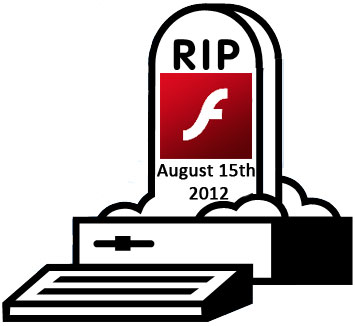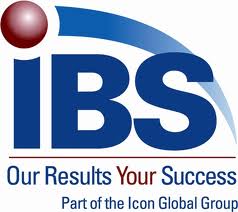Icon Business Solutions is a Global organisation that is focused on working with Owner / Managers of SMEs to help them become more profitable, reduce their time commitment and achieve their business and life plans. Tano Rebora is a partner of Icon Business Solutions and an experienced Business Adviser, as well as the Seven Creative blog’s guest business writer.

Tano Rebora, Icon Business Solutions Ltd.
Today, Tano asks: Is your competition hurting your profits?
I am referring to Vodafone making a successful bid for the Cable and Wireless business.
Well, I guess that those within the sector long term or keen watchers may have had an inkling, but most business people, across the board, that I have discussed this with did not see it coming.
Is this a potential future threat to the almighty BT?
Fascinating – not from the present positioning or financial viewpoint but because it reflects the highly competitive nature of the telecoms industry; the continual repositioning of the major ‘brands’ as different carriers of different services. But who defines the new world order; the brand or the consumer? This does not just refer to the telecoms sector, of course, the question applies to all
Yet the Vodafone strategic vision is very clear: ‘delivering a more valuable Vodafone’ through five clear directions amongst which – ‘total communications: continue to develop the adoption of converged fixed and mobile services’. We should have known, really.
There we are; a clear strategy, clear direction and clear competitive positioning which has taken it out of a very clear niche that other mobile suppliers are competing in.
Whilst ‘the pack’ is racing around to be ‘the best’, Vodafone has moved the goalposts. Joan Magretta of the Harvard Business School defines Michael Porter’s view of Competitive Strategy as ‘why being unique is better than being best’.
So what makes companies across the spectrum – ‘unique’?
There are a number of factors but, principally amongst these:
Many owners/ shareholders believe in having organisations that are ‘agile’ and ‘flexible’. Of course, they are completely correct. Who wants an organisation that already has a ‘due by date’ from the beginning? Organisations must evolve in order to achieve. But note the use of the word, evolve.
It is the duty of any executive team, from the start-up to the corporate, to establish a vision of what their company is to achieve in the longer term, not simply the next six months. With that comes a clarity of product/ service to be provided, to what market and in what timescale. Planning for all other functions follow that.
Experience dictates that most yearly plans revolve around the ‘last year plus x%’ and that most business owners, at varying levels of company turnaround, have not had the opportunity to focus on where they want or need to be. Far less are the Owner/ managers who actually see the development of their company reflecting their own personal and business needs
Stephen Covey, in his ‘7 habits of Effective Managers’ advocates starting with the end in mind but – how does business generally measure up. In the eyes of this author – poorly.
If this is the case then competitors will always lead.
Many Owners start their companies with clear ideas of where they intend to be personally at some future point. Of course, as the inevitable pressures start the line between what the intended market is and who seems to be interested in the products/ services the lines become blurred.
It does happen that may some start with a perception of the market they intend to serve only to find that the perceived market does not exist, is already serviced by potentially competing products or barriers to entry are higher than first thought.
It is easy to deviate from the plan at that point, maybe it’s time to go back to the drawing board and to refocus. Does this just happen to ‘newbies’?. Many companies find that the mismatch within the first to second year of operation, some struggle with this for eternity, it seems.
The questions to ask are basic: What is our product? What market does it serve?
The most successful companies answer this in two ways:
- Complete and total focus: find the real niche and serve that to the exclusion of all else. If the market does not seem big enough to serve the needs then expand geographically.
- Reorganise into different divisions: serve differing markets with the same or slightly differing products under the same ‘umbrella’ or brand thus being able to measure the effectiveness of the sales/ marketing effort and maximising synergies.
In most cases, it seems clear that few ask: Who is our Client? In B2B scenarios: is it the M.D., the HR Director, etc. etc ? Appropriate messaging should ensue as should appropriate direction of the sales effort and product bundling.
- Differentiated product/ service:
Although most business owners may believe otherwise, there are relatively few Steve Jobs, Bill Gates, Sir James Dyson or, at a different level, Sir Alan Sugar or Richard Branson.
The fact is that, for most companies, someone somewhere has a product that is similar. If not, there soon will be; the cult of the ‘me too’ has been alive and kicking for many centuries.
But how to differentiate?
Many business owners/ salespeople claim to ‘experience in the industry’, ‘best product’, ‘geographic availability’, ‘best client service’, ‘24/7 cover’, add your own here. The list is endless. Yet sadly, so often in this quagmire of similarity it all boils down, at least in the buyers mind, to – how much does it cost?
Of course, it is very easy to make these statements from afar and not see the ‘day to day’ battlefield that we all operate in.
Frequently, as company leaders struggle to work ‘on rather than in’ (Michael Gerber – The e-Myth) the race seems to be centred on ‘price’ as the ‘holy grail’ of client acquisition policy. But so many factors contribute which are, somehow, left behind in thinking and practice.
Why is your company unique? How is it demonstrably different? Ask the question repeatedly because if there isn’t an easy answer then how is the prospective client to know? More importantly, how will they justify the price to themselves?
Dramatically, the euphoria of the acquisition of a new client is quickly superseded by the misery, on reflection, of a diminished profit margin. Yet how many Company owners really know how much they are able to discount without bleeding funds to a very nasty conclusion?
Competition is, and will always be, alive and kicking. Encourage competition; make competitors your ‘allies’. After all the more activity in a marketplace the more opportunity there is. Just make sure that the product and the service the Clients want is yours. Why: because you knew what they wanted and you are strategically building a company that provides this in a more demonstrably different way to everyone else.
Good Luck.
Tano Rebora, Icon Business Solutions Ltd.








